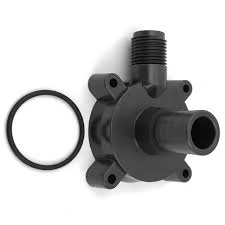Mobile:+86-311-808-126-83
Email:info@ydcastings.com
what is diecasting
What is Die Casting?
Die casting is a manufacturing process that involves forcing molten metal under high pressure into a mold cavity. This process is widely used to produce components with complex shapes and intricate details, making it an essential method in various industries, including automotive, aerospace, electronics, and consumer goods. The versatility and efficiency of die casting make it a popular choice for manufacturers seeking high-quality and precision-engineered parts.
The Process of Die Casting
The die casting process begins with the selection of the appropriate metal, which is typically aluminum, zinc, magnesium, or copper alloys. These metals are favored for their favorable mechanical properties and excellent fluidity when melted. The process can be divided into several key steps
1. Melting The selected metal is heated in a furnace until it reaches a molten state. The temperature needed for melting varies depending on the specific alloy being used.
2. Injection Once the metal is molten, it is injected into a die (the mold) under high pressure. This pressure can exceed 1000 to 3000 psi. The use of high pressure ensures that the molten metal fills all the intricate features of the die, leading to a well-defined final product.
3. Cooling After the molten metal is injected into the die, it cools and solidifies quickly. This rapid cooling is one of the advantages of die casting, as it allows for faster production cycles compared to other methods.
4. Ejection Once the metal has solidified, the die is opened, and the newly formed component is ejected. The ejection process can involve mechanical ejectors or hydraulic systems.
5. Post-Processing After ejection, the components may require additional processing, such as trimming, machining, or surface finishing, to meet specific tolerances and aesthetic requirements.
Advantages of Die Casting
Die casting offers several advantages that contribute to its popularity in various manufacturing sectors
what is diecasting

1. Precision and Dimensional Accuracy The high pressure used during injection results in components with precise dimensions and smooth surface finishes. This precision reduces the need for extensive machining, saving time and costs.
2. Complex Geometries Die casting can produce parts with complex shapes and designs that might be challenging or impossible to achieve with other manufacturing processes.
3. High Production Rates The ability to create multiple parts in a single run, combined with the quick cooling time, allows for high production rates, making it suitable for mass production.
4. Material Efficiency Die casting minimizes waste material through the use of efficient die designs and the ability to recycle excess metal.
5. Better Mechanical Properties The cooling process of die casting allows for the development of finer grain structures, which can enhance the mechanical properties of the finished products.
Applications of Die Casting
Die casting is widely used across various industries due to its numerous advantages. In the automotive industry, die-cast components are found in engine blocks, transmission housings, and various structural parts designed to minimize weight while maintaining strength. In the electronics sector, components such as housings for laptops and smartphones often utilize die casting for their precision and durability.
The aerospace industry also benefits from die casting, using it to create lightweight yet robust components for aircraft. Moreover, the consumer goods sector employs die casting for items like kitchen appliances, power tools, and decorative hardware.
Conclusion
In summary, die casting is a vital manufacturing process that enables the production of high-precision components with complex geometries. Its efficiency, material flexibility, and ability to produce parts quickly make it an invaluable technique across many industries. With ongoing advancements in technology and materials, the applications of die casting are expected to expand, further solidifying its role in modern manufacturing. As industries continue to innovate, die casting will likely remain at the forefront of efficient and effective manufacturing solutions.
-
Impeller Technology That Powers Precision in Pump SystemsNewsMay.22,2025
-
Valve Durability Begins with Quality Cast Iron ComponentsNewsMay.22,2025
-
Performance Cooling with Advanced Automobile Water Pump SolutionsNewsMay.22,2025
-
How Motor Housing and Oil Pans Shape Engine PerformanceNewsMay.22,2025
-
How Metal Castings Drive Modern Manufacturing EfficiencyNewsMay.22,2025
-
Exploring the Engineering Behind Valve Body CastingsNewsMay.22,2025











